Learning how to play guitar in a tuning such as open G tuning can seem a bit overwhelming, almost to the point where it feels like you are learning a completely new instrument.
However, with some basic fretboard shapes and fingerings playing in open G tuning can feel just as comfortable as playing in standard or whatever other tuning you are already fluent in.
In this article on open G tuning I will be supplying you with just the tools you need to open the door to open G tuning.
Improve your guitar playing by downloading a copy of my Free Guitar Practice Routine Checklist and Planning Guide.
Table Of Contents
- A Brief Overview Of Open G Tuning
- Chord Scales in Open G Tuning
- Other Chords in Open G Tuning
- Chord Progressions in Open G Tuning
- Scales in Open G Tuning
- Arpeggios in Open G Tuning
- Licks in Open G Tuning
- Songs in Open G Tuning
A Brief Overview Of Open G Tuning
Open G tuning is a tuning that, when all the strings of the guitar are strummed open, produces a G major chord.
From low to high the strings are tuned as follows:
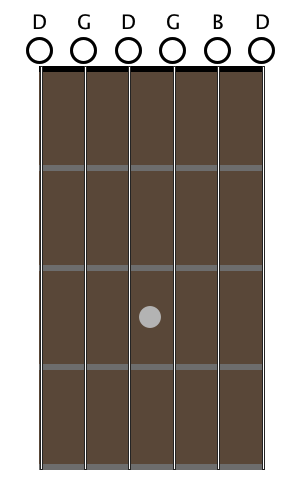
You’ll notice that the root note of the G major chord is on the fifth string and not the sixth.
This can make the chord sound a bit muddy but makes it very easy to play a major chord as all you need to to do is bar across all the strings on a single fret to produce a major chord.
Keith Richards of The Rolling Stones would actually remove the sixth string for this reason but that is certainly not necessary to sound good in open G tuning as I will show you.
To quickly get to open G tuning from standard tuning all you need to do is lower your sixth, fifth, and first strings down one whole step (two fret distance).
So tune your low E string down to a D, your A string down to a G and your high E string down to a D.
Once you’re all tuned up we can dive in to learning some tools to get you started in open G tuning.
Chord Scales In Open G Tuning
Chord scales are a great first tool to have in a new tuning as they supply you with a group of chords that will give you the ability to either play popular songs or write your own.
A chord scale is essentially just a harmonized scale, and in the case of the examples below, a harmonized major scale.
By harmonizing the major scale into basic three-note chords, known as triads, we end up with a group of movable chords that can be translated very easily into other keys.
With just three basic chord shapes, one for each chord type used, you have all the fingerings you need to navigate your way through almost any key.
The examples below are all written in the key of A as this key does not require the use of any open strings and will best exemplify how to use these “movable” chord shapes.
By simply shifting up or down the fretboard these chord scales can be transposed into many different keys.
Each chord scale is written in guitar TAB preceded by the three chord shapes being applied.
Three String Chord Scale: Strings 123
This first chord scale is a three string chord scale built by harmonizing a major scale on the third string with the third of each triad on the second string and the fifth on the first string.
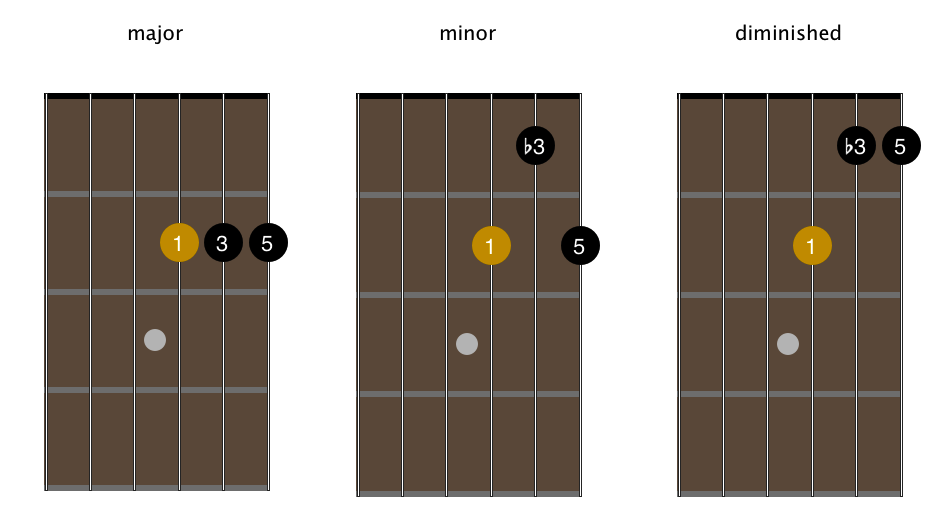

Three String Chord Scale: Strings 234
This next chord scale is another three string chord scale still built from a major scale on the third string but with the third of each triad on the second string and the fifth on the fourth string.
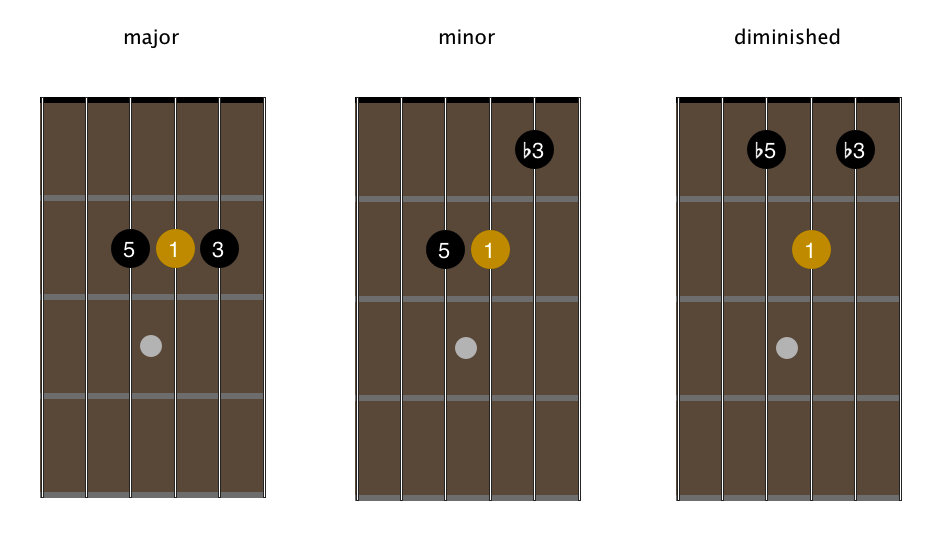

Four String Chord Scale: Strings 2345
This is a four string chord scale built from a major scale on the fifth string with the fifth of each triad on the fourth string, the root again on the third string and the third on the second string.
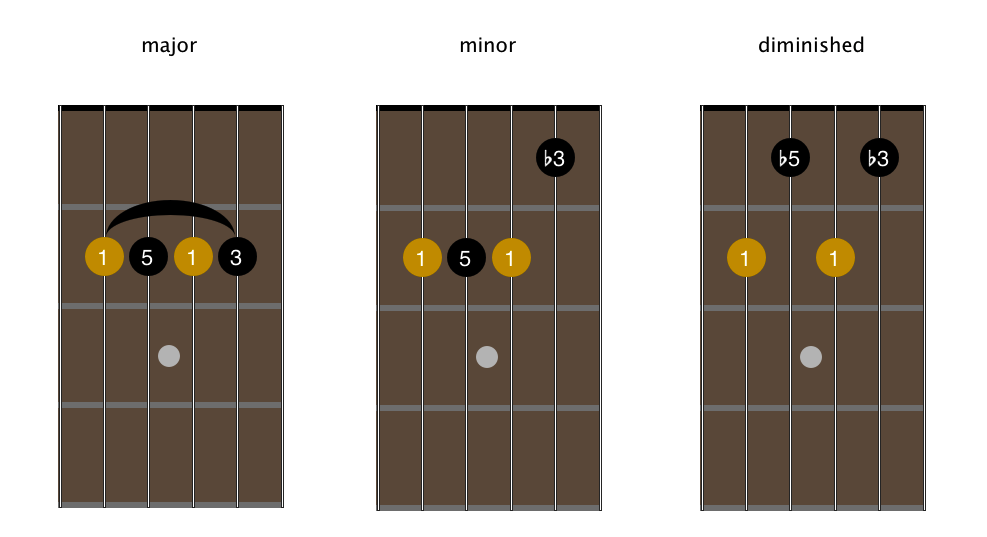

Five String Chord Scale: Strings 12345
This is a five string chord scale and is just an extension of the previous four string chord scale with an added fifth of each triad on the first string.
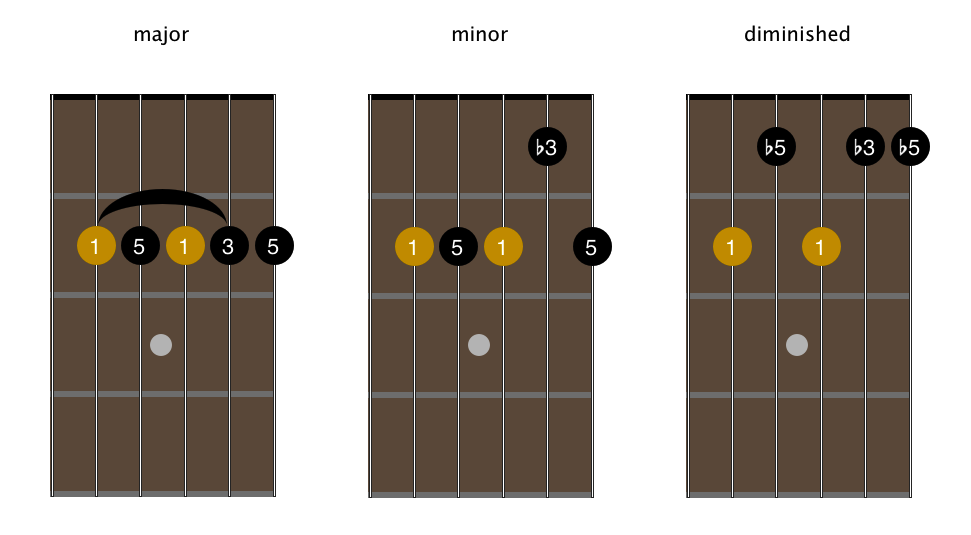

Other Chords In Open G Tuning
There are plenty of other common chord shapes in open G tuning that are useful to know.
Below are a few examples of some common chord shapes to help expand your open G tuning chord vocabulary.
Power Chords
Just as in standard tuning we can also play power chords in open G tuning using the following chord shapes, one with the root note on the sixth string and one with the root on the fifth string.
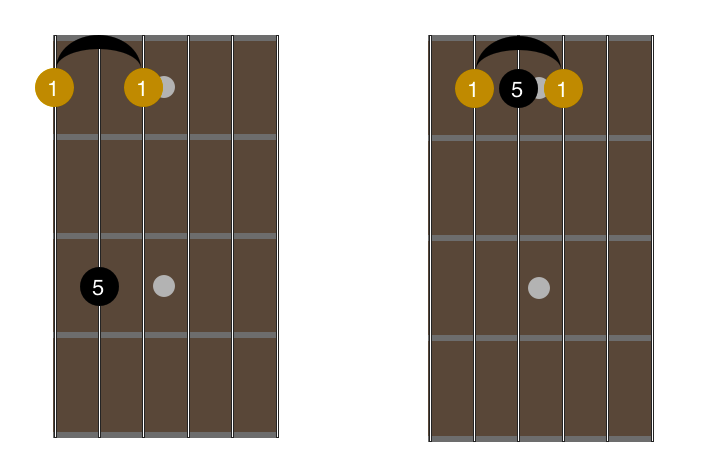
Open Chords
Also just as in standard tuning, there are basic open chord shapes in open G tuning that can be used to play some of your favourite songs.
Below are a few examples of some basic open chords in open G tuning.
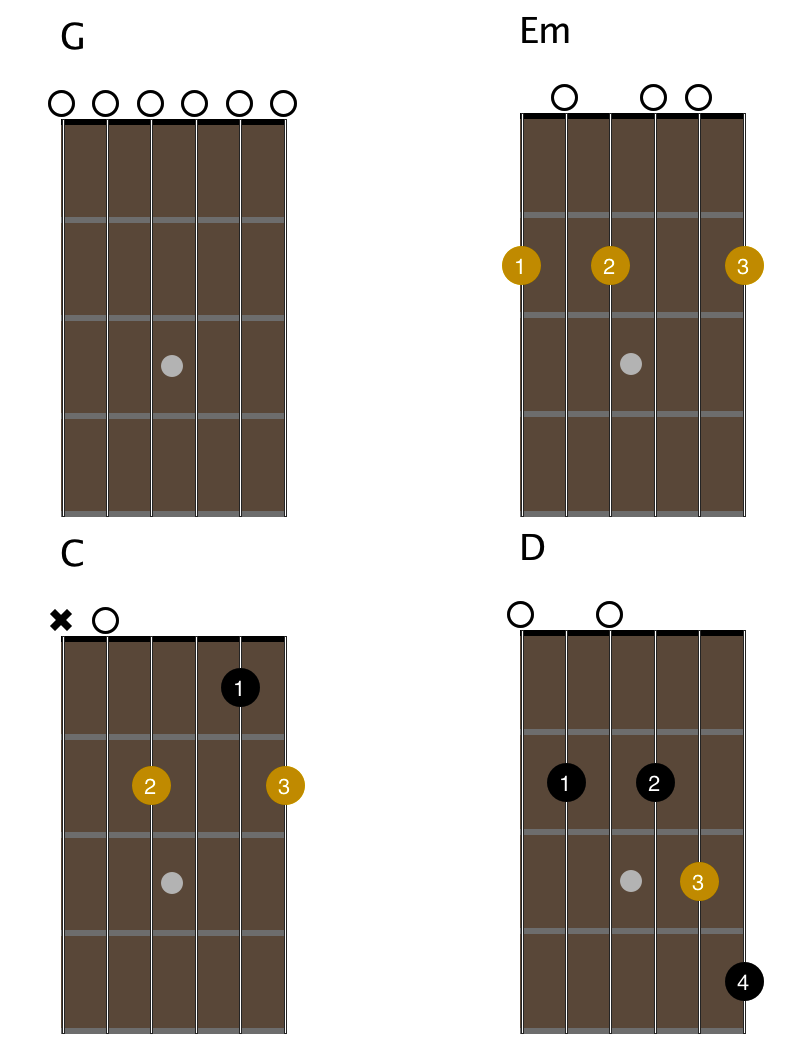
Chord Progressions In Open G Tuning
To help you understand how to start using some of these chords in open G tuning, here are some popular chord progressions to practice using some of the chord shapes discussed above.
Although each chord progression is written in a single key with a simple rhythm, I encourage you to try and transpose each chord progression into as many different keys as you can and to try coming up with your own strum patterns to practice with.
I IV V I
The first chord progression to practice your open g tuning chords with is I IV V I in the key of A.
This chord progression uses only major chords from the five string chord scale discussed previously.

vi IV I V
This next chord progression to practice is vi IV I V in the key of A and uses chords from the three string chord scale on strings one two and three discussed above.

I iii IV V
This chord progression is I iii IV V in the key of A and uses chords from the four string chord scale discussed previously.

I V vi IV
This chord progression is I V vi IV in the key of F and makes use of the power chord shapes in open G tuning discussed above.
Though power chords just contain the root and the fifth of each chord, the quality of each chord can be implied from the harmonic relationship between the chords in the progression.

I vi IV V
This chord progression is I vi IV V in the key of G and makes use of the open chords in open G tuning discussed previously.

Scales In Open G Tuning
The next step to becoming fluent in open G tuning is to learn some fingerings in open G for common guitar scales.
Learning scales on the guitar is an essential step to becoming a lead guitarist and developing the ability to play guitar solos.
To help you develop your lead guitar playing abilities in open G tuning, here are one and two octave fingerings for some popular scales on the guitar.
Each scale is displayed in a movable fingering diagram followed by a TAB exemplifying how to use each pattern in a specific key.
Try practicing the scales ascending and descending and in as many different keys as you can along the fretboard.
Major Scale
One Octave Fingering 1
The first major scale is a one octave fingering with the root note on the sixth string.
The example below the diagram is written in the key of A major but I encourage you to practice this shape in as many keys as possible.
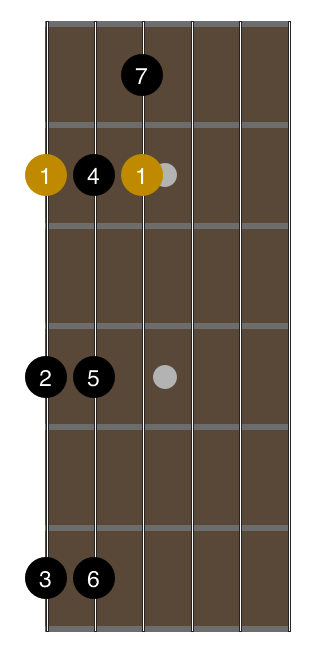

One Octave Fingering 2
This is a one octave major scale with the root note on the fifth string.
The example in the TAB below is written in the Key of A major but try moving this fingering around to different keys.
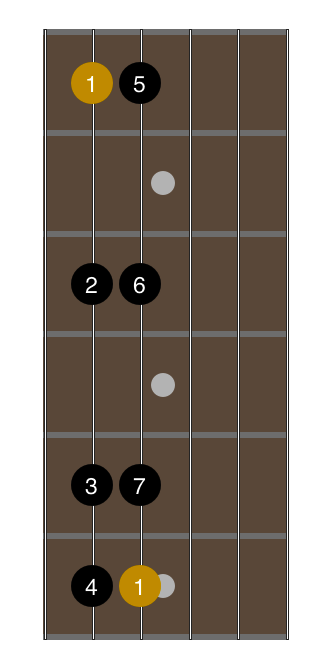

One Octave Fingering 3
This is a one octave major scale with the root note on the fourth string and spans across four strings.
The example below is written in the key of A major.
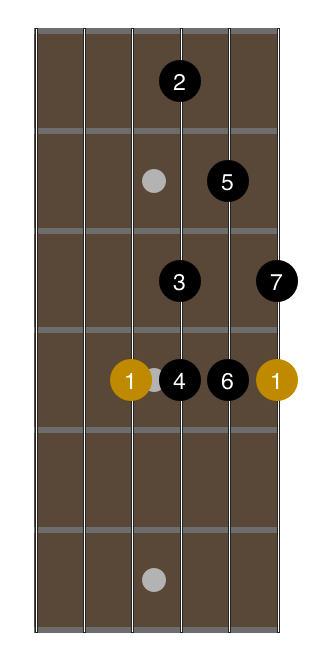

One Octave Fingering 4
This is another one octave major scale also with the root note on the fourth string but only spans across three strings.
Again, the example below is written in A major and I encourage you to move this fingering around and practice it in as many keys as possible.


Two Octave Fingering 1
This is a two octave major scale fingering with the root note on the sixth string spanning 5 strings across.
The example in the TAB below is written in A major but can me moved around the fretboard and practiced in multiple keys.
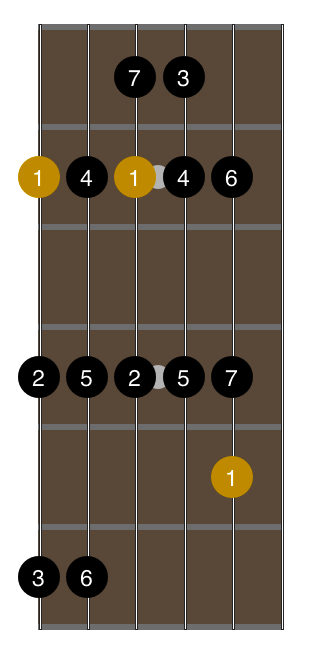

Two Octave Fingering 2
This is a two octave major scale fingering with the root note on the sixth string and spans across all six strings.
The example in the TAB below is written is A major and again can be moved around the fretboard to be practiced in multiple keys.
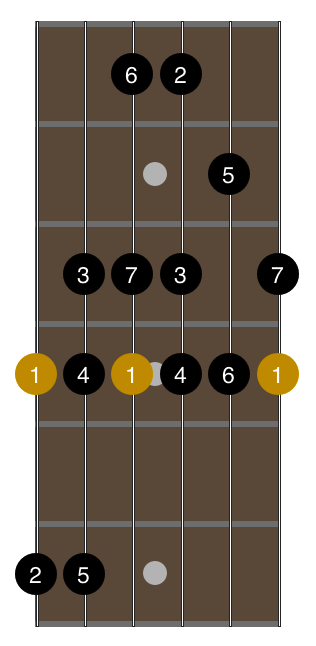

Two Octave Fingering 3
This is a two octave major scale fingering with the root note on the fifth string and spans across five strings.
The example is written in A major and can be more moved around the fretboard to be practiced in multiple keys and positions.
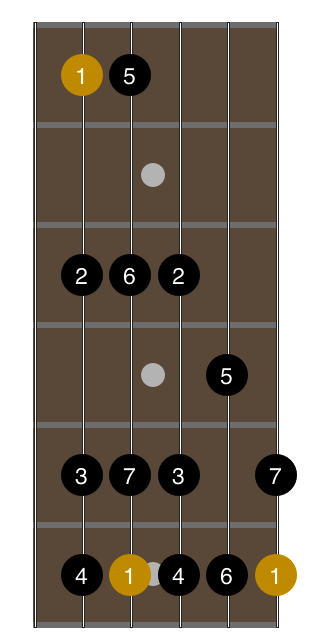

Natural Minor Scale
One Octave Fingering
This is a one octave natural minor scale fingering with the root note on the fourth string and spans across three strings.
The example is written in the key of F# minor but can be moved around the fretboard to be practiced in multiple keys and positions.


Two Octave Fingering
This is a two octave natural minor scale fingering with the root note on the sixth string and spans across five strings.
The example in the TAB below is written in the key of F# minor but can be moved around the fretboard to be practiced in multiple keys and positions.
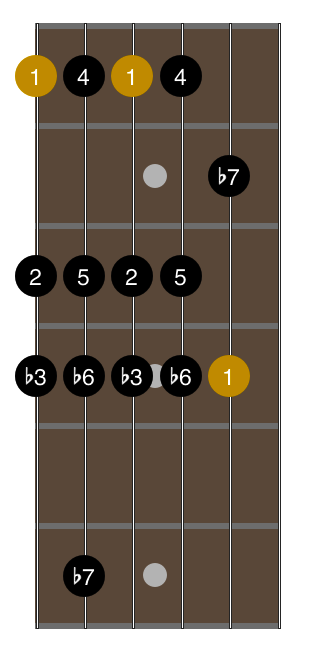

Minor Pentatonic scale
This is a two octave minor pentatonic scale with the root note on the sixth string and spans across six strings.
The minor pentatonic scale is a five note scale and the example written out in the TAB below is in the key of F# minor.
This fingering can be moved around the fretboard to be practiced in multiple keys and positions.
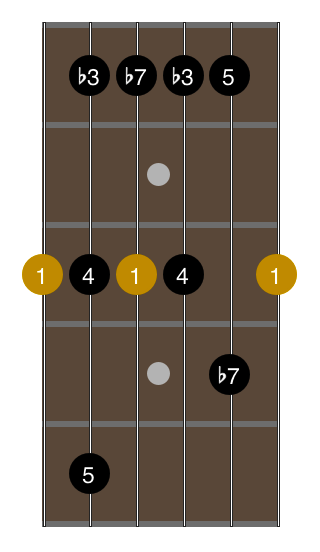

Major Pentatonic Scale
This is a two octave major pentatonic scale with the root note on the sixth string and spans across five strings.
The major pentatonic scale is also a five note scale and the example in the TAB below is written in the key of A major.
This major pentatonic scale fingering can be moved around the fretboard to be practiced in multiple keys and positions.
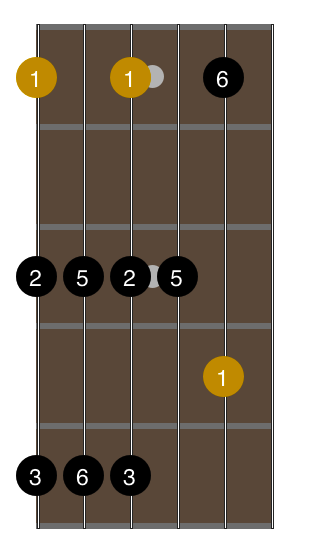

Arpeggios In Open G Tuning
Arpeggios are broken chords and serve as great tools to develop your navigational skills on the fretboard.
By practicing arpeggios you will further expand your lead guitar playing in open G tuning while also developing your knowledge of the open G fretboard.
Below are arpeggio shapes for each of the three chord types that were used in the chord scales above.
Again, each arpeggio is displayed in a movable fingering diagram followed by a TAB exemplifying how to use each pattern in the key of A major.
I encourage you to try practicing each arpeggio ascending and descending and in as many different keys as you can.
One Octave Fourth String Root
These first three arpeggio shapes are all one octave shapes with their root notes on the fourth string, thirds on the third string, fifths on the second string and roots one octave higher on the first string.
Try using these arpeggios as finger exercises in multiple keys and positions around the fretboard.
The example written in the TAB below the diagrams is in the key of A major.
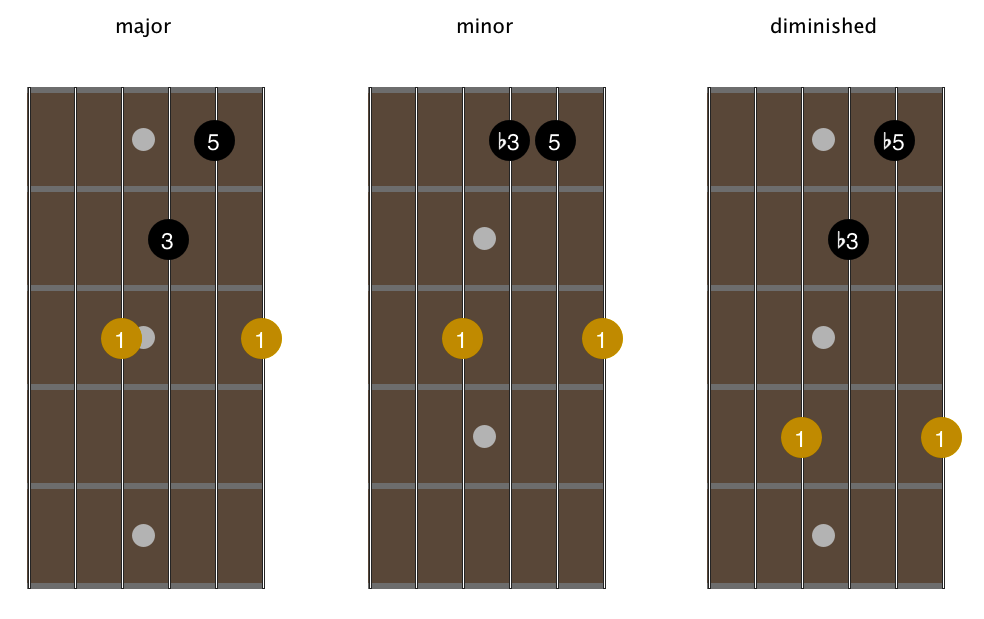

One Octave Sixth String Root
These arpeggio shapes are one octave fingerings with their root notes on the sixth string, thirds and fifths on the fifth string and roots one octave higher on the fourth string.
Try combining these shapes together with other other arpeggios to form chord progressions that can be practiced as longer finger exercises with the added benefit of a little ear training.
The example written in the TAB below the diagrams is in the key of A major.
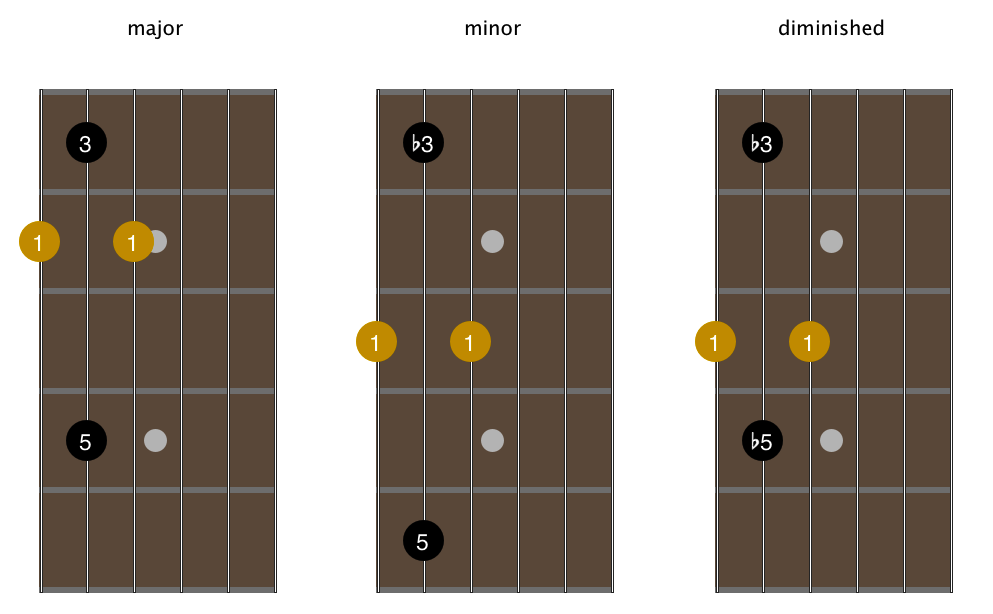

Two Octave Sixth String Root
These final arpeggio shapes are two octave fingerings with their roots on the sixth string and span across all six strings with the exception of there being no note on the second string.
The example written in the TAB below the diagrams is in the key of A major and I suggest practicing these shapes in multiple keys and positions around the fretboard.
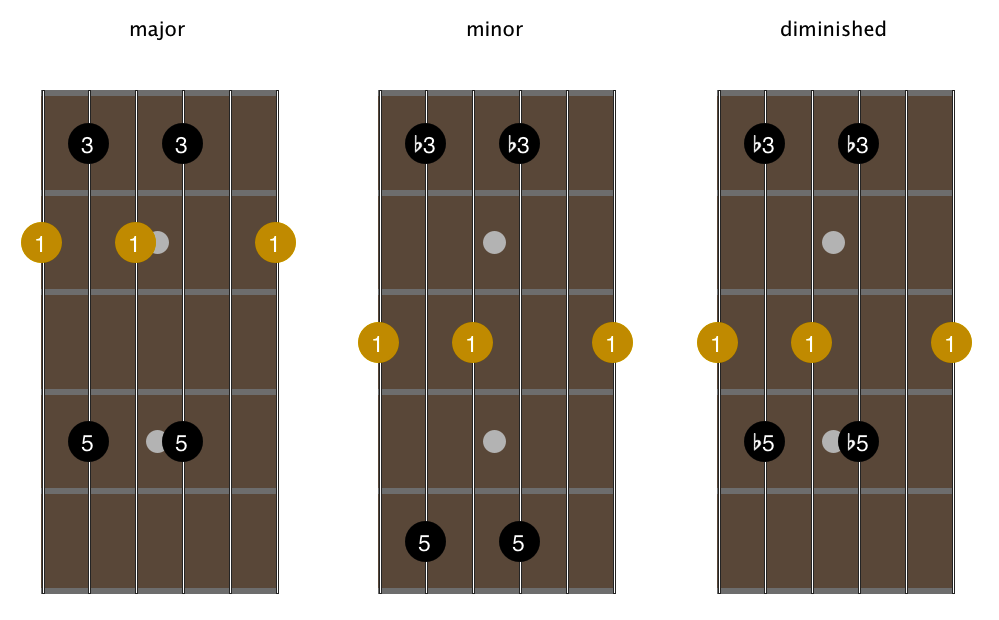
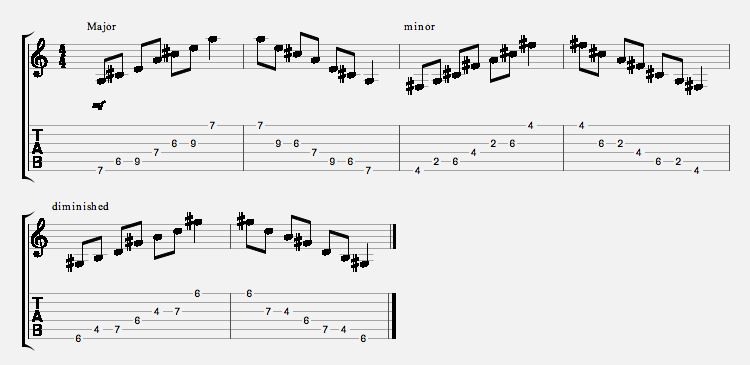
Licks In Open G Tuning
By practicing licks in open G tuning you will be taking all the technical knowledge you have learned about the tuning so far and begin to apply that knowledge in a musical way.
Licks are musical phrases and are a great way to see how to actually create music using open G tuning.
Below are three different licks in open G tuning for you to practice.
After practicing the open G tuning licks below I encourage you to try coming up with your own licks in open G.
Lick 1
This first lick for you to practice is a finger-style lick in the key of G and makes use of chords from the four string chord scale written above.
To help you get an idea as to how this lick should be performed take a listen to the audio example before trying it out.
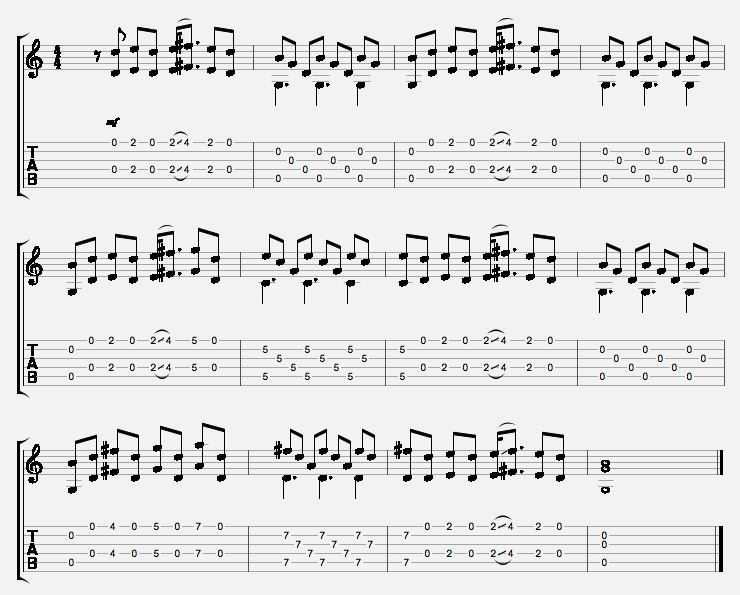
Lick 2
This is a short blues style lick in the key of G minor and makes use of the minor pentatonic scale discussed above.
To help you get an idea as to how this lick should be performed take a listen to the audio example before trying it out.

Lick 3
This lick is written in the key of C major and exemplifies how you can use the notes of the chord scales written above to navigate your way through a chord progression in a musical way.
To help you get an idea as to how this lick should be performed take a listen to the audio example before trying it out.

Songs In Open G Tuning
Below is a list of songs that were written and performed in open G tuning to help get your ears used to the tuning and to hopefully inspire you to continue exploring the wonderful world of open G tuning.
And who knows, maybe one day you will see a song you’ve written in open G tuning on a list just like this one.
The Rolling Stones
Pink Floyd
Led Zeppelin
“When The Levee Breaks” (down one whole step)



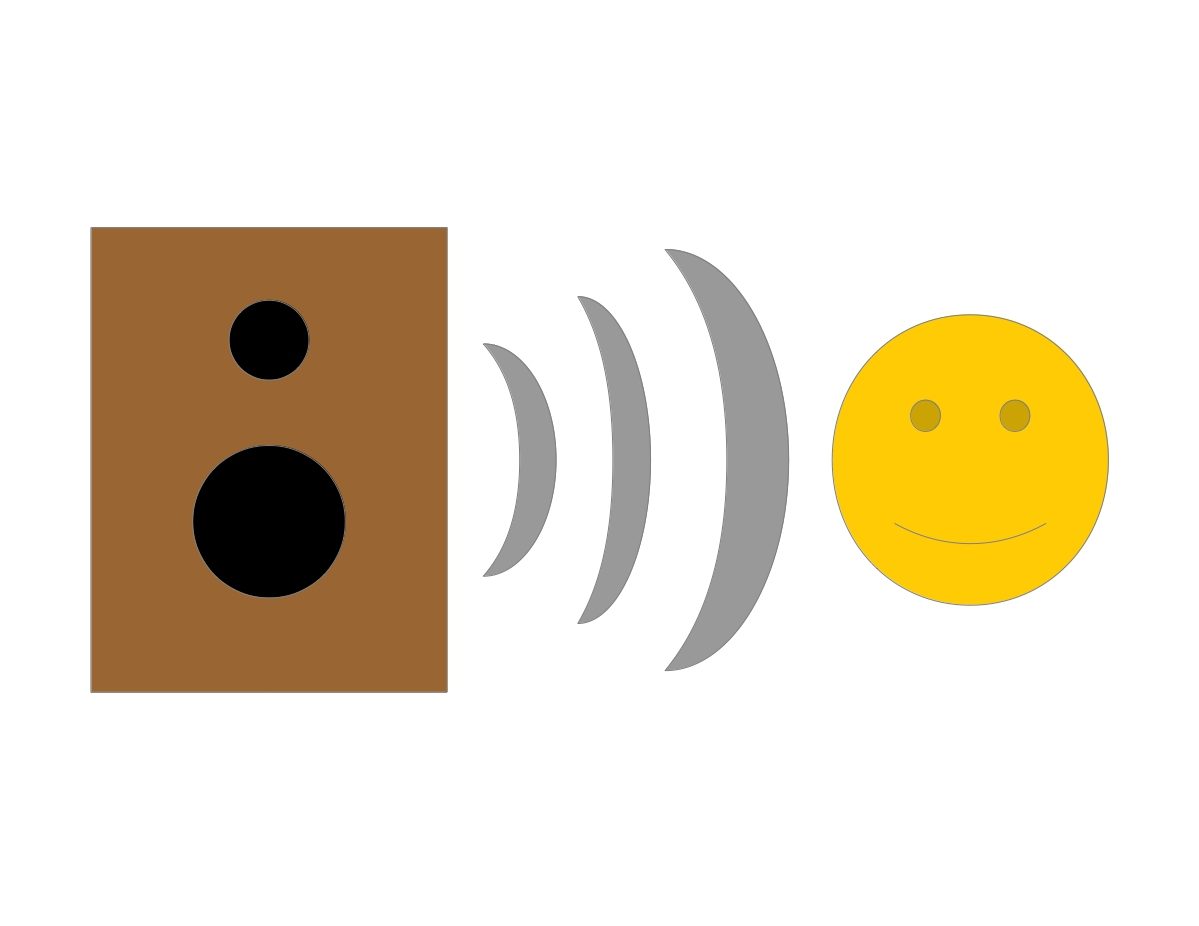
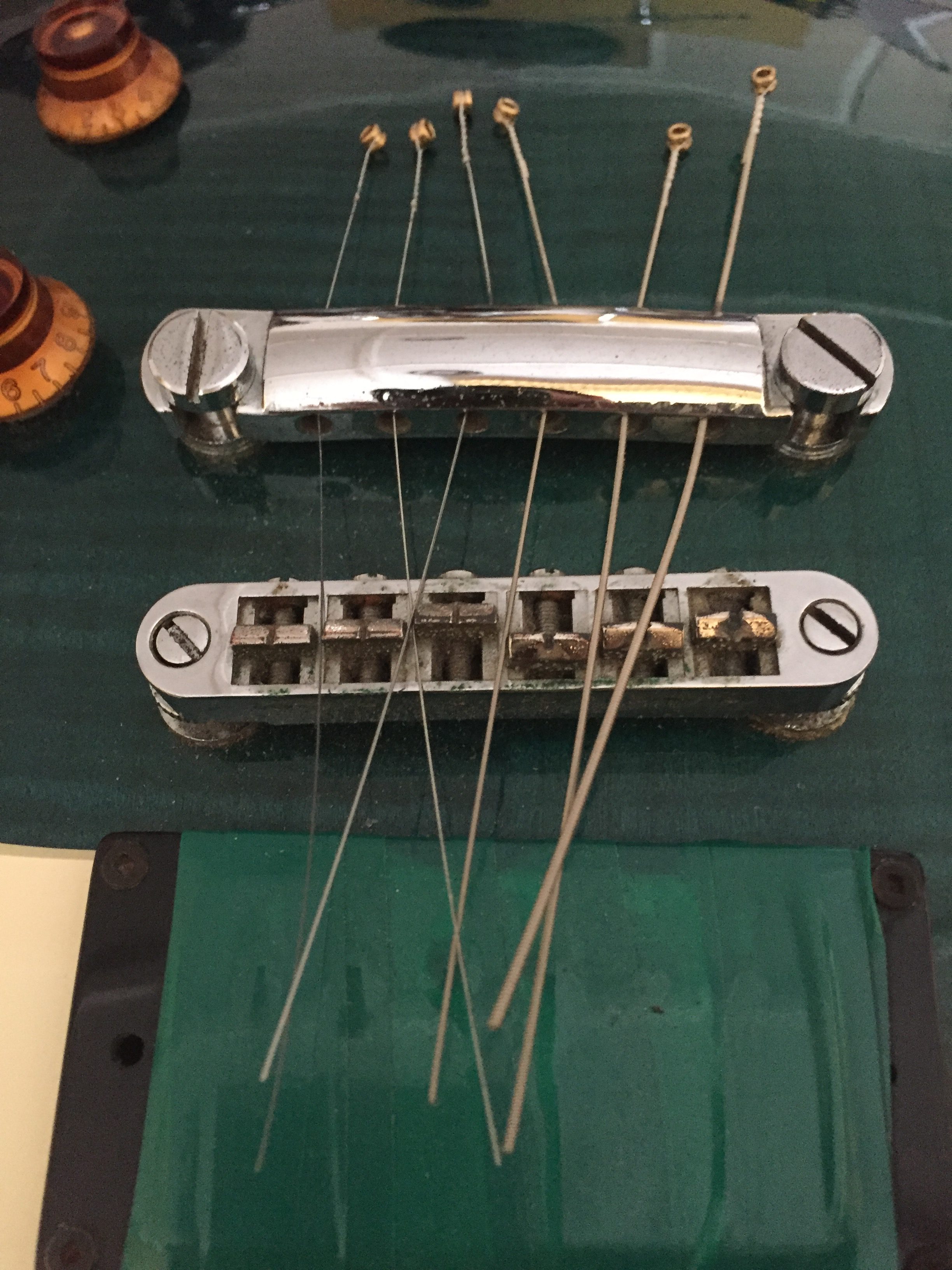
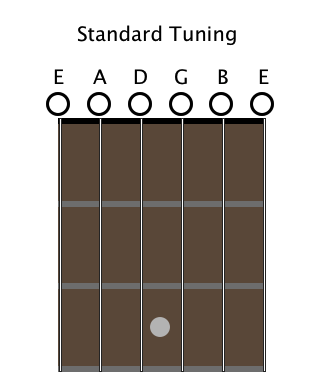
No Comments